The photos throughout this article track the walk along the BeltLine’s Eastside Trail, starting from the entrance at 10th Street and Monroe.
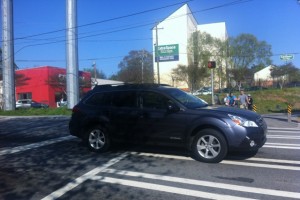
I went the wrong way the first time I tried to use the Eastside Trail.
In my defense, it starts as an extension of Piedmont Park, and that’s where it looks like the real green is. It’s hilly, it’s vibrant—it’s what a green space should look like. The Eastside Trail, on the other hand, is asphalt.
But then, you realize this is where all the joggers, bikers, families and regular trail-goers in sight are headed. No one’s turning the corner: everyone wants to be here. And they’re all approaching a giant burst of color—a mural painted on an overpass, seemingly out-of-place in this industrial area.
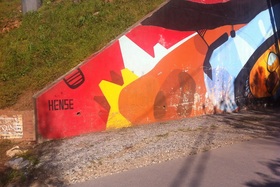
This big weird mural is, though, a design by Atlanta-based graffiti artist Hense, and part of an initiative that spans the whole city. The Eastside Trail of the Atlanta BeltLine, and its respective Art on the Atlanta BeltLine program, is the newest opening in an assembly of several trails around the city that aims to, one day, connect all of the city’s neighborhoods in a movement-inspiring, environmentally-friendly, city-revitalizing kind of way.
Atlantans are truly tethered to their cars. It’s an enormously ambitious goal to get the city to think about getting around any other way. And yet, they’re trying it–and it all can be traced back to one man’s master’s thesis.
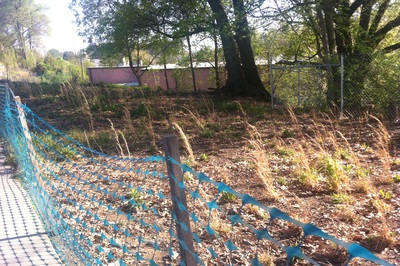
In 1999, Ryan Gravel was a graduate student at Georgia Tech studying architecture and urban planning. His now-unforgettable thesis opens with the words, “The project of the modern city was built only in fragments, and the challenge now is to remodel and augment the different parts of the city without destroying them.”
A challenge indeed. Particularly in the case of Atlanta, which was Gravel’s focus in the thesis. Forbes once called Atlanta one of the most disjointed cities in the country: there’s no grid system to simplify construction selections, and the downtown neighborhoods are markedly divided.
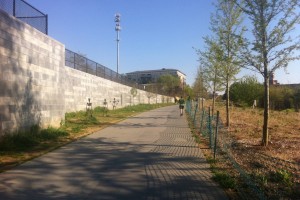
But Gravel, who grew up in Chamblee—a northeastern suburb of Atlanta, about a half-hour drive from the BeltLine— and has lived his whole life in the metro area, saw potential to fix this disconnect in the city’s history as a rail hub. The railways were primitive, sure. But they provided the city with a kind of efficiency and connectedness that hasn’t been seen since. So Gravel studied up on the current states of the rail corridors, and found that by and large, they weren’t being used. But Gravel felt that that abandoned land alongside the corridor had tons of potential.
“A lot of communities that used to have those kinds of [attached] qualities back when there were streetcars, they’re gone,” Gravel offers. “So the kernel of the idea was to reuse the corridor for transportation and then the associated redevelopment of all the abandoned industrial land that follows those railroads.”
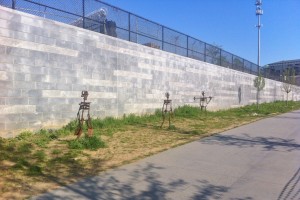
So he put two and two together, and his thesis (aptly titled “Belt Line – Atlanta as a Reflection of Public Policy”) proposed “new lighter transit lines could be woven throughout the city.” These lines would pay tribute to the city’s past as a rail center (old-fashioned streetcars), but also encourage residents to get around in fresh, environmentally-friendly and modern ways (through bike and hiking trails).
Gravel rails (pun very much intended) against Atlanta being a “car city.” The freeways were built to relieve congestion, but, he says, they’ve only made the city feel more frantic.
“The design of infrastructure influences urban development…and the interstate highway system has created a very different but recognizable pattern,” Gravel says. “I meant to revitalize that…and do that through transit. And that would encourage compact, mixed-use redevelopment.”
Gravel speaks academically—in the form of a true architect, like someone who really has spent nearly all of his adult life studying up on this phenomenon.
Indeed, it’s obvious that Gravel knows his stuff about urban infrastructure. His thesis cites cities around the world as models for an efficient transportation system:
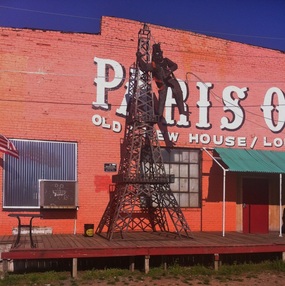
Paris with the Metro, Chicago with the El, Berlin with the Onkel Toms Hutte. And when we talk, he tells me he’s involved in about 30 similar projects nationwide, and rattles off a list of cities he’s working with to help develop their own unique versions of the BeltLine. He mentions, among others, New York’s High Line (a green space and walkway situated above a historic freight line), Los Angeles’ River (a similar idea, but along the river), Houston’s Green Spaces, and Cleveland’s aspirations for a bridge project.
“I think the BeltLine is part of a movement of the sort of catalytic construction projects,” Gravel explains. “People in different communities getting involved to enact change in their community and to create something interesting. What’s really cool is that most of them are tied to the origin of the place. So Atlanta’s a railway town and here we are reinventing the railroad as a new infrastructure for the future…L.A. is the same thing. I mean, L.A.’s downtown is where it is because of the river, and who even knew they had a river? So it’s pretty cool that they are making the future around an authentic piece of the town, their reason for being.”
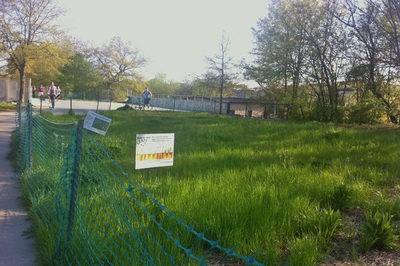
He continues—it’s easy to see that this is what makes him the proudest.
“The cool thing about it is that we’re kind of learning from each other,” Gravel continues. “So we were in similar positions, in the early stages of getting [the BeltLine] off the ground and we tried to learn from [the High Line]. And it’s cool that the people who work on these projects across the country are willing to work together and willing to learn from each other.”

It’s safe to say that Gravel’s world has gotten bigger: all the way from a thesis to a nation-wide phenomenon. But at the same time that his plans are being realized on a larger scale, he also has to hone in on the micro-details. It’s his job to both see the big picture and to make the nitty-gritty work.
And he really loves it. He talks to me animatedly about the ramps, trees and stairways that they’re hoping to implement in the BeltLine over the next year.
“Today, I was just talking to a woman who’s trying to start a business for urban agriculture and edible plants along the BeltLine,” Gravel says. “And so there’s this new sort of layer that might sort of be overlaid on the larger vision, and that’s only going to make the project more interesting. Wouldn’t that be kind of cool to be walking down the trail and pick some blackberries off the vine?”
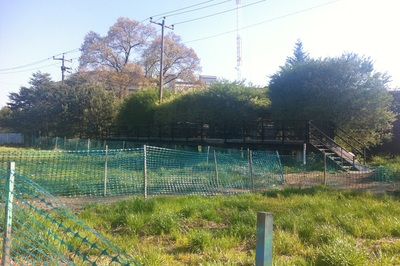
The possibilities are endless, and Gravel says a lot of the initiatives the BeltLine has ended up adopting have come to him by sheer happenstance.
He doesn’t need any help getting him excited about the BeltLine—Gravel is clearly of the mindset that urban planning itself is worth getting energized about.
But not all Atlantans feel the same way—some of them need a little motivation to see the potential in abandoned rail tracks. And that’s where initiatives like Art on the Atlanta BeltLine come in.
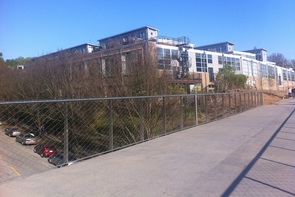
—
At 10th Street and Monroe Drive, at the tip of Piedmont Park (where I got lost), it either feels like you’re headed into the wilderness or an abandoned neighborhood. Grass grows wild and unkempt, and the asphalt trail is simple and unmarked. There’s no sign telling you that this is the right way.
But I guess it makes sense that way. The BeltLine’s Eastside Trail isn’t centered on the art or really on any aspect of its aesthetic; it’s about being out and about in Atlanta. Not in a car.
Still, that it’s not the center of attention doesn’t make Hense’s untitled mural under the Virginia Bridge any less enjoyable. After trekking down the rough road, I finally come to the bridge, where it feels like I have been transported. It is truly a breath of fresh air, a glimmer of color in an otherwise-gray area. It’s an abstract work, so I’m not sure what exactly I’m looking at. But it’s certain that if this burst of color and life and interest in what’s currently a dull, gray pathway is a sign of what’s to come with the BeltLine, the neighborhoods of Atlanta are going to start looking a whole lot more enchanting.
And this certainly is a sign of what’s to come. The mural is just one of dozens of works of art scattered along the BeltLine. It’s part of the permanent collection—a group of long-lasting sculptures, murals and constructions that you can find along the trail year-round. But at the height of the annual Art on the Atlanta BeltLine exhibition, in the fall, it gets even more intense: there’s art everywhere you turn. In fact, the 2013 exhibition included more than 70 works throughout a span of two months.

There are sculptures. There’s music. There are dance performances. There’s basically every art you could want.
But as we talk, it becomes clear that Gravel isn’t exactly an art aficionado. He’s more roused by how the project will change the way people experience the city. Still, he says, “The idea was to get people to come out to the BeltLine,” and the exhibition has certainly succeeded on that front. In the three years since its inception, hundreds of artists have participated in the project, and thousands of observers have come to check out the excitement.
The Art on the Atlanta BeltLine’s website reads, “It is a powerful conduit for everyone in the Atlanta region to gather, connect and experience something vibrant and dynamic; something that stirs passions and creates an energy unlike anything that has ever been conceived of in our vast community.”
Dr. Catherine Ross, one of Gravel’s most devoted allies on the project, once called the BeltLine “a link from where we are to where we aspire to be.”
And that’s true both in terms of location and in terms of mindset. One day, Gravel hopes that the BeltLine will take Atlantans across the city swiftly and effectively. And the artists hope that their work will make the ride a little more enjoyable.
“It’s been a learning experience for me,” says Gravel. “It’s been evolving. I mean, you wouldn’t want this to be exactly what was in some kid’s school paper, right?”
It’s true—the project has undergone many changes. But if the success of Gravel’s initial vision is any indication, maybe his school paper isn’t such a bad thing to aspire to after all.
Take a look at the details of the BeltLine’s progress, and how to get to it yourself:
[timeline src=”https://docs.google.com/spreadsheet/ccc?key=0AqkWlOPdrtLtdFNPR01vZXVpTzRERmVUZUFHeGtNaFE&usp=drive_web#gid=0″ width=”100%” height=”650″ font=”Bevan-PotanoSans” maptype=”toner” lang=”en” ]

